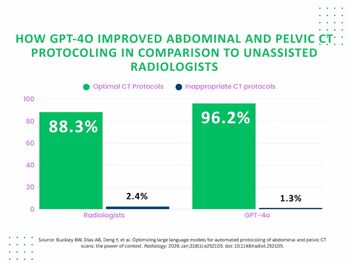
CMS to Cover Low-Dose CT for Lung Cancer Screening
Coverage of low-dose CT for lung cancer screening makes for an historical lung cancer awareness month.
The Centers for Medicare & Medicaid Services (CMS) issued their proposed
The decision comes after almost a year of pressure from medical organizations citing the
The coverage extends to high-risk seniors that meet the following criteria: aged 55-74, asymptomatic of signs of lung disease, 30 pack-year smoking history, current smoker, or one who quit smoking in the past 15 years. The beneficiary must receive a physician or non-physician practitioner’s written order for LDCT lung cancer screening during a lung cancer screening counseling and shared decision making visit, the decision states. The lung cancer screening counseling and shared decision making visit includes determination of beneficiary eligibility; shared decision making that includes the use of one or more decision aids and details benefits, harms, follow-up diagnostic testing, over-diagnosis, false positive rate, and total radiation exposure; and counseling on the importance of adhering to annual LDCT lung cancer screening, the effect of comorbidities and ability or willingness to undergo diagnosis and treatment, and the importance of maintaining cigarette smoking abstinence.
Radiologists reading the studies must have current certification with the American Board of Radiology or equivalent organization, documented training in diagnostic radiology and radiation safety, involvement in the supervision and interpretation of at least 300 chest CT acquisitions in the past three years, and documented participation in CME in accordance with current ACR standards.
A radiology imaging center can identify as an eligible LDCT screening facility if it has participated in past lung cancer screening trials or is an accredited diagnostic imaging center with training and experience in LDCT lung cancer screening, uses LDCTs with an effective radiation dose less than 1.5 mSv, and collects and submits data to a CMS-approved national registry for each LDCT lung cancer screening performed.
The ACR has already lauded CMS’ decision.
“CT lung cancer screening is the first and only
The ACR also announced in a release that they will apply to be a Medicare-recognized registry and will work with stakeholders to submit comments regarding the details of the CMS coverage announcement.
Since the United States Preventive Services Task Force (USPSTF) recommended CT lung cancer screening of adults aged 55-80 who have a 30 pack-year smoking history and currently smoke or have quit within the past 15 years, Medicare will now join private insurers in covering the screening.
“Lung cancer will kill 160,000 Americans this year - more than breast, colon and prostate cancers combined. Medicare coverage of these exams helps complete the first major blow against this terrible disease. This is a great day for those at high-risk for lung cancer and their families. We look forward to a future where a lung cancer diagnosis is no longer essentially a death sentence for so many people,” Kazerooni said in the release.
Newsletter
Stay at the forefront of radiology with the Diagnostic Imaging newsletter, delivering the latest news, clinical insights, and imaging advancements for today’s radiologists.




























